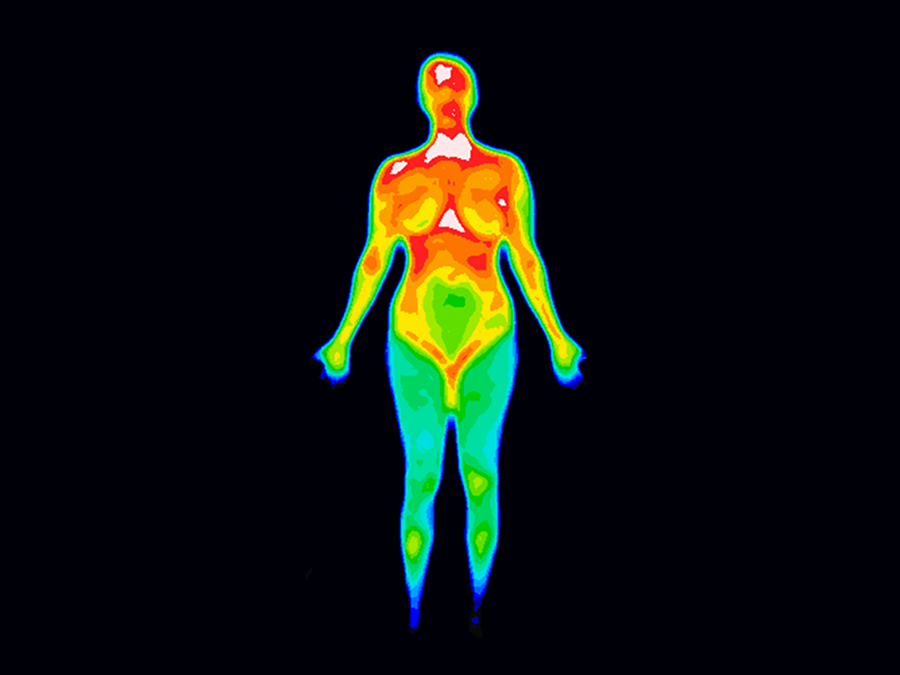During World War I, it was discovered that many of the chemicals for new explosives had toxic or even lethal effects on the workers in the munitions factories. Chemicals such as di-nitro-phenol (DNP) can boost metabolism so much that workers were too often found wandering along the road after work, covered in sweat with temperatures of 106 to 109 degrees Fahrenheit before they died. Even after death, their temperatures kept going up, as if they were having a total body meltdown. At subacute doses, however, workers claimed to have grown thin to a notable extent after several months working with the chemical.
RELATED ARTICLE:
That got some Stanford pharmacologists excited about the “promising metabolic applications” of DNP. Our resting metabolic rate jumps up 30% after one dose of DNP, and therefore, it becomes an actual fat-burning drug. People started losing weight, as you can see in my video Brown Fat: Losing Weight Through Thermogenesis, with no apparent side effects. They felt great… and then thousands of people started going blind and users started dropping dead from hyperpyrexia, fatal fever due to the heat created by the burning fat. Of course, it continued to be sold. Ad copy read:
“Here, at last, is a [weight] reducing remedy that will bring you a figure men admire and women envy, without danger to your health or change in your regular mode of living….No diet, no exercise!”
It did work, but the therapeutic index—the difference between the effective dose and the deadly dose—was razor thin. It was not until thousands suffered irreversible harm that it got pulled from the market and remained unavailable. Unavailable, that is, until it was brought back by the internet for those dying to be thin.
There is, however, a way our body naturally burns fat to create heat. When we’re born, we go from a nice tropical 98.6 in our mother’s womb straight to room temperature, just when we’re still all wet and slimy. As an adaptive mechanism to maintain warmth, the appearance of a unique organ around 150 million years ago allowed mammals to maintain our high body temperatures.
RELATED ARTICLE:
That unique organ is called brown adipose tissue, or BAT, and its role is to consume fat calories by generating heat in response to cold exposure. The white fat in our bellies stores fat, but the brown fat, located up between our shoulder blades, burns fat. BAT is essential for thermogenesis, the creation of heat in newborns, but has been considered unnecessary in adults who have higher metabolic rates and increased muscle mass for shivering to warm us up when we get chilled. We used to think brown tissue just shrank away when we grew up, but, if it was there, then it could potentially make a big difference for how many calories we burn every day.
When PET scans were invented to detect metabolically active tissues like cancer, oncologists kept finding hot spots in the neck and shoulder regions that on CT scans turned out not to be cancer, just fat. Then, some observant radiologists noticed they appeared in patients mostly during the cold winter months. When they looked closer at tissue samples taken from people who had undergone neck surgery, they found it: brown fat in adults.
The common message from a number of studies is that BAT is present and active in adults, and the more we have and the more active it is, the thinner we are. And we can rapidly activate our fat-burning brown fat by exposure to cold temperatures. For example, if you hang out in a cold room for two hours in your undies and put your legs on a block of ice for four minutes every five minutes, you can elicit a marked increase in energy expenditure, thanks to brown fat activation. So, the studies point to a potential “natural” intervention to stimulate energy expenditure: Turn down the heat to burn calories (and reduce the carbon footprint in the process).
RELATED ARTICLE:
Thankfully, for those of us who would rather not lay our bare legs on blocks of ice, our brown fat can also be activated by some food ingredients such as those that are covered in my Boosting Brown Fat Through Diet video.
I briefly touch on the role cold temperatures can play in weight loss in The Ice Diet and talk more about calories in (Nutrient-Dense Approach to Weight Management) and calories out (How Much Exercise to Sustain Weight Loss).
In health,
Michael Greger, M.D.
*Article originally appeared at Nutrition Facts.












